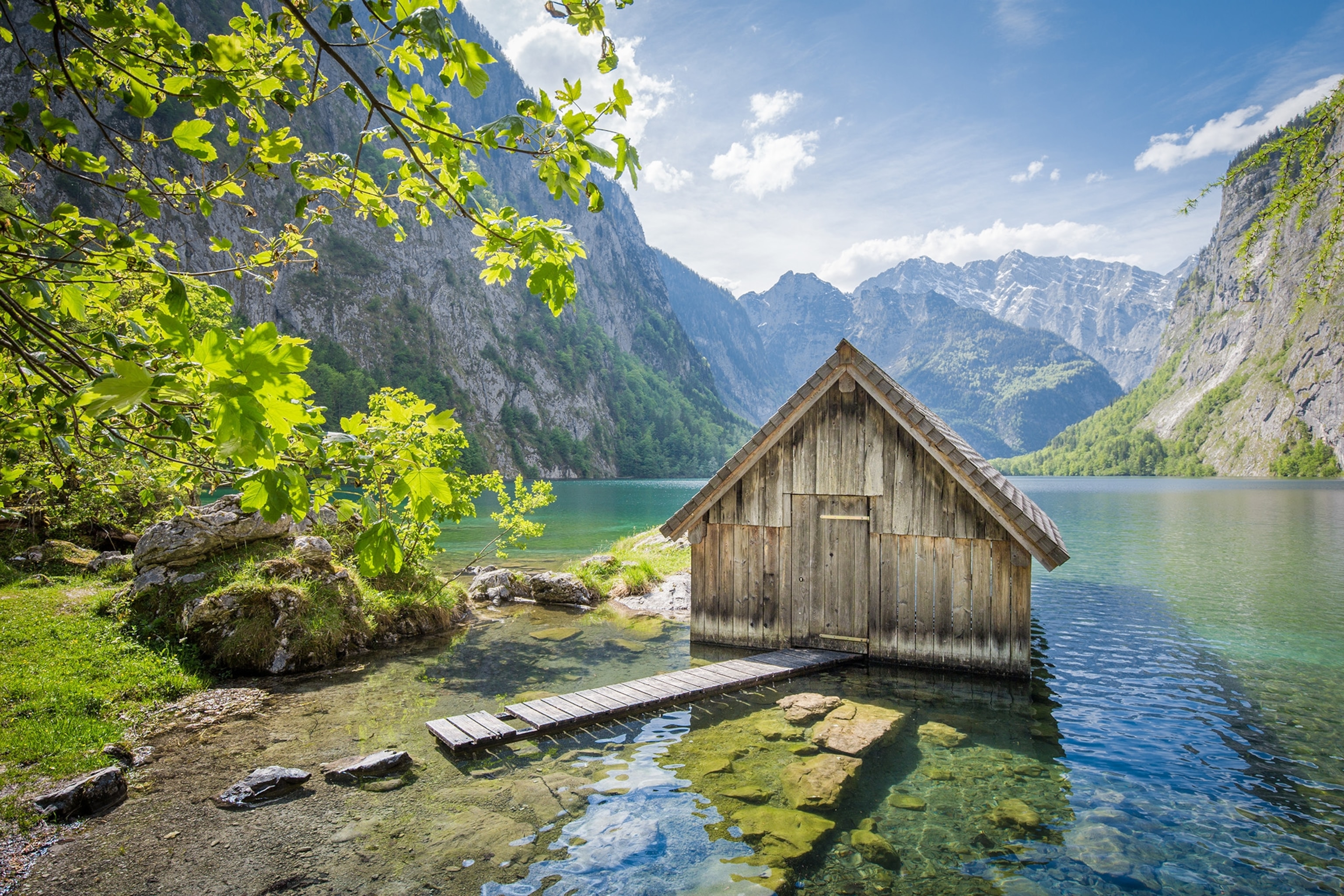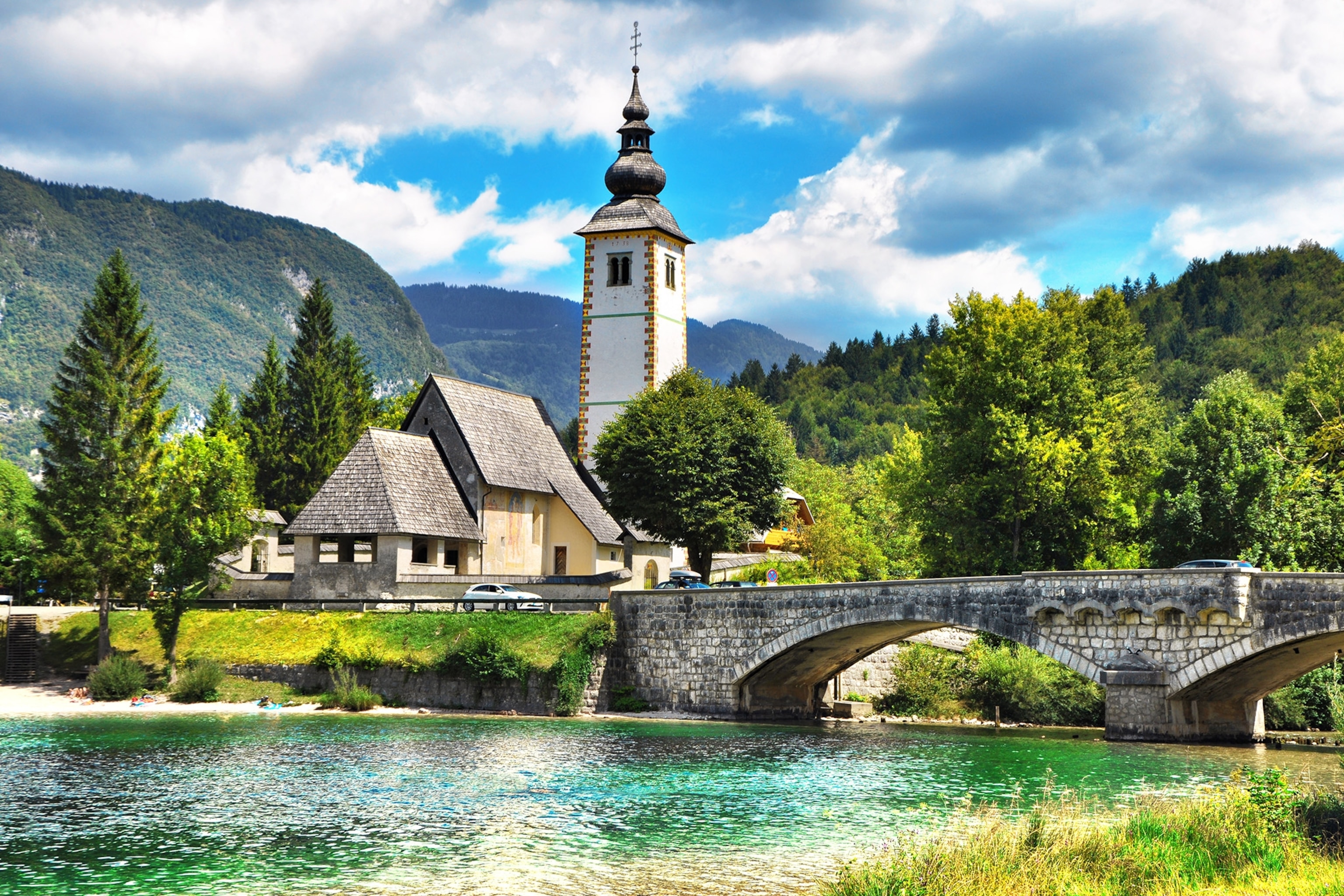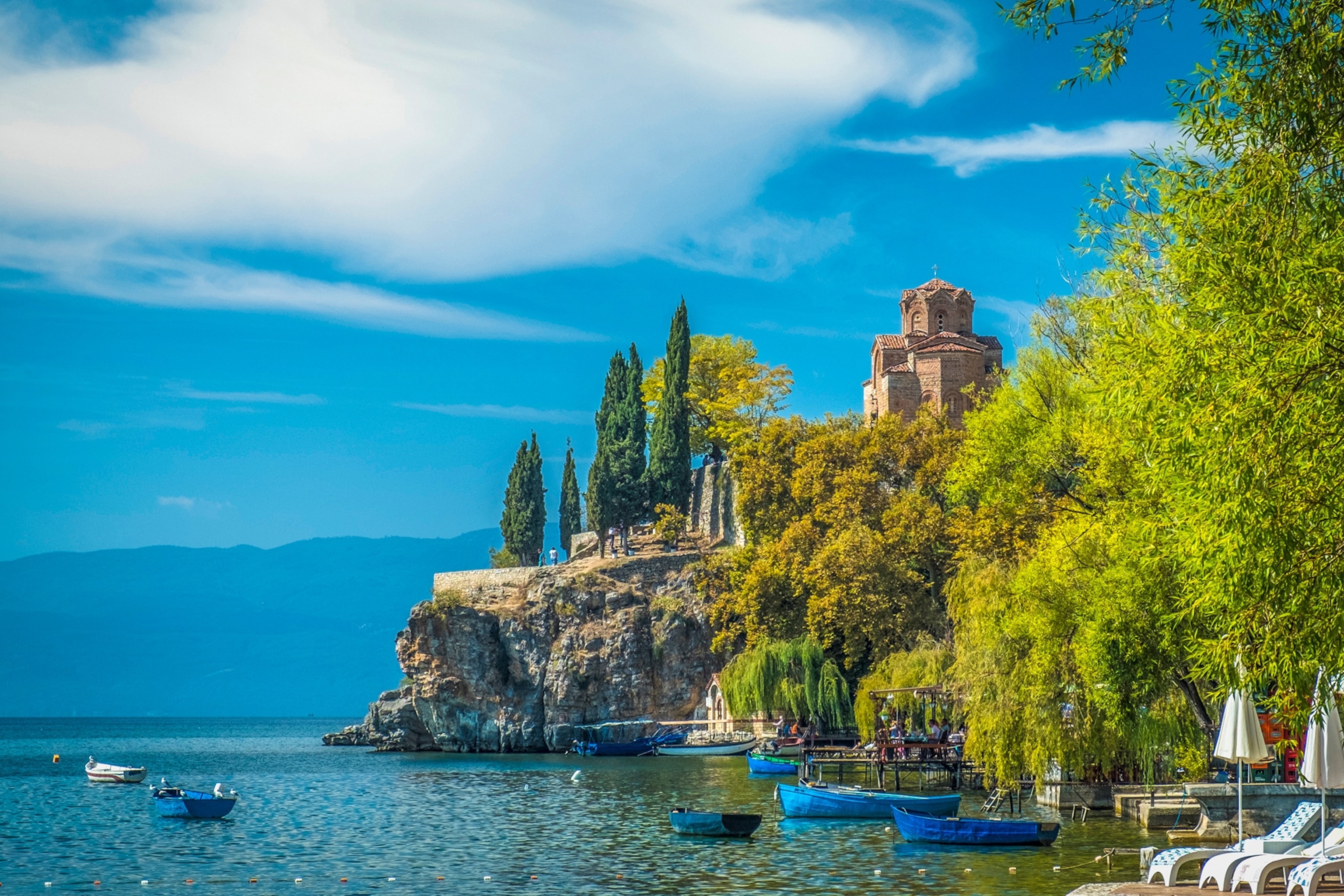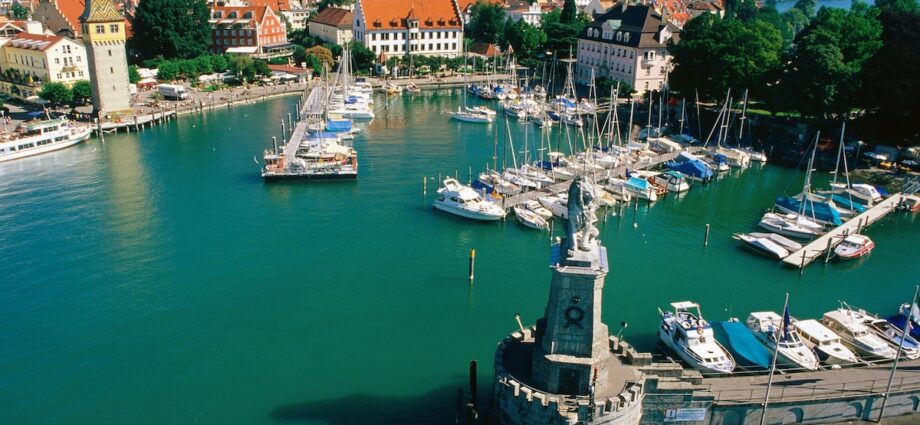This article was produced by National Geographic Traveller (UK).
As the summer heat rises along the coast of the Med, turn your gaze instead to Europe’s dazzlingly diverse array of lakes. Beyond swimming, kayaking and standup paddleboarding in crystal-clear waters, there’s plenty to explore — think medieval castles and vineyards, prehistoric pile dwellings and Byzantine monasteries, regal gardens, cathedrals and Orthodox churches. From Portugal’s Great Lake of Alqueva to Croatia’s Lake Peruča, here are five European lakes that should be firmly on your radar.
1. Lake Constance, Germany
Fancy breakfast in Germany, lunch in Austria and dinner in Switzerland? With uplifting views of the not-too-distant Alps, Lake Constance dips prettily into three countries and delivers an extraordinary hit of beauty, history and culture. Central Europe’s third largest lake is a knockout, whether you want to breeze across its waters by ferry or canoe, or jump onto a bicycle to pedal a stretch of its 160-mile circular cycle path. And with temperatures hovering around 25C, it’s pleasantly warm, but not too hot for exploring.
This lake is like Europe in microcosm, knitting together beaches, orchards, vineyards, bird-rich wetlands, wooded gorges, gardens, historic towns and art galleries. You won’t forget the likes of stone-walled Meersburg, with its fairytale looks, wine taverns and turreted medieval castle; the prehistoric pile dwellings of Unteruhldingen; Roman-rooted Konstanz with its magnificent minster; or the fantasy Mediterranean gardens on the islet of Mainau in a hurry. For southern flair, head over to prettily pastel-painted Lindau for gelato on cafe terraces and glittering lake views from the harbour guarded by a lighthouse and Bavarian lion.

Lake Constance is like Europe in microcosm, knitting together beaches, orchards, vineyards, bird-rich wetlands, wooded gorges, gardens, historic towns and art galleries.
Photograph by bluejayphoto, Getty Images
2. Great Lake of Alqueva, Portugal
Skip southern Portugal’s wave-smashed Atlantic coast in summer and head to the Alentejo, where its vast hinterland is ripe for discovery. A mighty splash of green blue, the fjord-like 95sq-mile Great Lake of Alqueva is a beauty. Nudging the Spanish border, Europe’s biggest reservoir is a fretwork of flooded valleys, narrow inlets and islands.
Come in summer to standup paddleboard and kayak across placid waters in quiet exhilaration and roll along its shores by bike or e-bike. When temperatures reach 35C in summer, you’ll be itching to dive into its refreshing waters from lakeside beaches. Top billing goes to Praia Fluvial de Monsaraz, with its powdery sands, floating pool and Centro Naútico ramping up the watersports action. Spilling photogenically down a granite boulder-strewn hillside, Monsaraz itself is right up there with Portugal’s prettiest villages. A medieval vision in white, it’s crowned by a castle built by King Dinis in the 14th century and laced with cobbled alleys once trodden by the Knights Templar. Snag a table on the terrace of Taverna Os Templários for front-row views of the lake and specialities like codfish salad and Alentejo roast pork.
By night, keep your eyes on starry skies. The Alqueva Dark Sky Reserve is the world’s first starlight tourism destination, with activities ranging from stargazing sessions to night tours by canoe and astrophotography workshops.

Lake Bohinj is a half-hour skip from Lake Bled, just as crazily beautiful but not nearly as crowded.
Photograph by Micolino, Getty Images
3. Lake Bohinj, Slovenia
Lake Bled gets all the love in northwest Slovenia, but Lake Bohinj, a half-hour skip south, is just as crazily beautiful and not nearly as crowded. You’ll draw breath when you first glimpse the ragged limestone peaks of the Julian Alps punching high above this piercing blue, glass-clear lake in Triglav National Park. Temperatures can rise to 30C in summer, when the lake’s mountain stream-fed waters warm up to 24C, and days fizzle into fiery pink-gold sunsets.
On the lake’s western shore, the peaceful village of Ukanc has a pebble beach for cooling swims. Pitch a tent at eco-conscious Camp Bohinj, where you can head out onto the water by kayak, stand-up paddleboard or canoe. They also arrange activities from caving, canyoning and rock climbing to cheese tours and schnapps tastings. Ukanc’s surrounds are wild, mountainous and thickly wooded. A cable glides up to nearby Vogel for on-high views of the lake and hikes in Alpine meadows and virgin forests. Shooting 255ft over the cliffs of Komarča into a pool of pure emerald green, Savica Waterfall is equally unmissable.
4. Lake Peruča, Croatia
Framed by a ripple of limestone mountains, Lake Peruča is a treasure tucked away in the Dalmatian Hinterland. Just a stone’s skim from Croatia’s Adriatic coast, this long slither of a lake is a proper back-to-nature escape. Here you can easily tiptoe away from the crowds in the heat of summer, when temperatures soar up to 35C, to leap gleefully into waters of stained-glass blue. Shaped by a dam on the River Cetina, Croatia’s largest artificial lake is a great one for cycling, hiking, kayaking or boating to quiet beaches and coves.
On the northern shores, the sleepy stone-built hamlet of Garjak makes a fine base, with arresting views of the rugged Dinara and Svilaja mountains and lake — never lovelier than in the hush of early morning when its turquoise waters are as still as a mill pond. Fringed by forest and pale-sand beaches, Camping Peruca gets you out, under and around the lake, with activities from rowing, kayaking, standup paddleboarding and diving to horse-riding and mountain biking. Stray slightly north to see the natural wonder that is the Eye of the Earth (Izvor Cetine), a jewel-like, circular karst spring that is the source of the River Cetina.

Snuggled between the mountains of North Macedonia and eastern Albania, the green-blue Lake Ohrid is among Europe’s oldest and deepest.
Photograph by Plamen Mihaylov, Getty Images
5. Lake Ohrid, North Macedonia
If you haven’t heard of the UNESCO World Heritage Site of Lake Ohrid, you’re not alone, but you are missing a trick. Snuggled between the mountains of North Macedonia and eastern Albania, this green-blue lake is among Europe’s oldest and deepest. Summer tempts with dips in translucent waters, picnics on east-shore pebble beaches like Potpesh and Labino, and the kind of pink-purple sunsets that stir the soul.
On the north shore, Ohrid is an enticing place to kick off a spin of the lake, with a cliff-hugging boardwalk unfurling to rocky beaches and a steep, warm-stone old town where cobbled alleys lead to Orthodox churches and a ruined medieval fort. Seafront restaurants pair local specialities like fish soup prepared with lake trout, lemon and garlic with Macedonian wines. Beyond Ohrid, you’ll be seduced by cultural big-hitters like domed, Byzantine-style, fresco-filled Sveti Naum monastery, high atop a cliff, and the reconstructed Bronze and Iron Age pile dwellings of the Bay of Bones.
To subscribe to National Geographic Traveller (UK) magazine click here. (Available in select countries only).

